
Infiniti Q50 Saloon (2014-2020) review
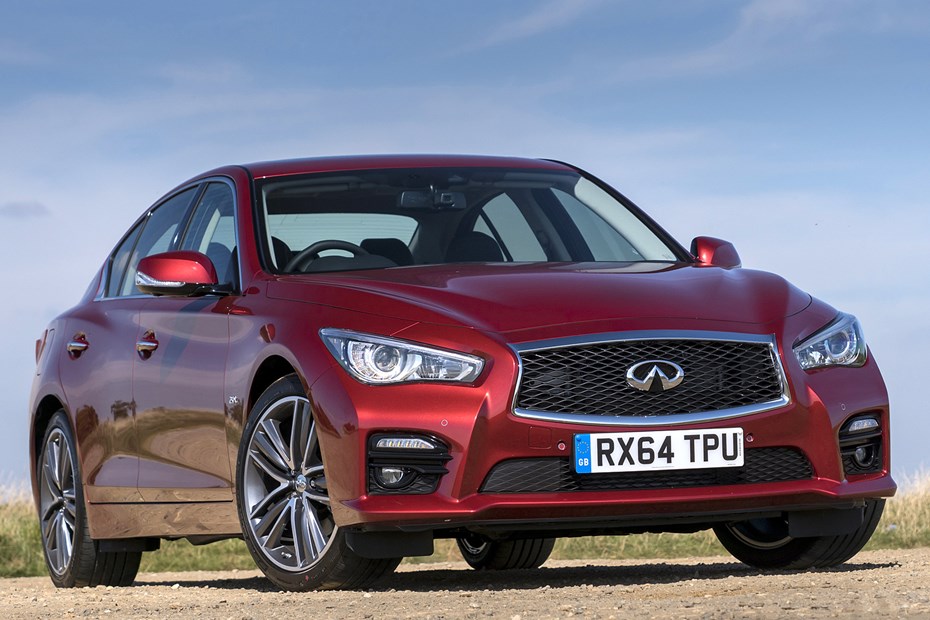
At a glance
| Price new | £29,695 - £49,375 |
|---|---|
| Used prices | £2,377 - £14,570 |
| Road tax cost | £35 - £620 |
| Insurance group | 30 - 43 |
Get an insurance quote with

|
|
| Fuel economy | 26.2 - 31.4 mpg |
| Range | 524 - 1058 miles |
| Miles per pound | 3.8 - 4.6 |
| Number of doors | 4 |
| View full specs for a specific version | |
Available fuel types
Petrol
Diesel
Hybrid
Pros & cons
- Distinctive looks
- Low emissions from new diesel
- Impressive technology
- Disengaged driving experience
- Poor quality interior
- Limited engine range
Infiniti Q50 (14-20) rivals
Overview
This is the car that could make or break Infiniti’s long term chances here in the UK, a market where so far it has struggled to rise to the high standards it sets itself. To say the infiniti Q50 is an incredibly important car for the brand would be a gross understatement.
It’s not underestimating the task ahead though, and while it realises that nine out of ten cars sold in this segment carry a German badge on their nose, the Japanese firm believes its mix of technology, luxury and efficiency will be enough to drive sales from bit-player to a viable but individual choice.
Diesel and Hybrid engines
There is the choice of a 2.2-litre diesel engine or a 3.5-litre petrol engine with hybrid technology dubbed Direct Response. The diesel engine will be the popular choice for the UK, especially among company car drivers thanks to CO2 emissions that start from 114g/km.
Claimed fuel consumption is also competitive with an average of 64mpg, though in our experience that figure was closer to 46-48mpg. The 3.5-litre hybrid version packs 359bhp and makes the 0-62mph dash in an even quicker 5.1 seconds with emissions of 145g/km of CO2. Unlike the rear-wheel drive only diesel, the petrol car can be specified with the firm’s four-wheel drive system as an option.
Driver appeal
Infiniti is taking the fight to the premium German brands with a driving experience it hopes will appeal to enthusiasts, offering a choice of six-speed manual gearbox and seven-speed automatic, and what Infiniti claims is an industry first: Direct Adaptive steering.
This electric fly by wire steering system uses ECUs to control the front wheels’ angle and is said to offer quicker and more accurate responses to your inputs. There’s still a mechanical link along the column, but when the car is running this is disengaged in case of a failure. Drivers can tailor the weight of the wheel via the touchscreen controls.
However take our advice and avoid it; for all it offers on paper in reality it struggles to provide any meaningful feedback or feel and detracts from the driving enthusiasts – it’s certainly not going to get enthusiasts queuing at the door to their local Infiniti centre.
Safety
Infiniti is also claiming its lane departure warning system is the most advanced yet. The Active Lane Control uses the steering to keep the car in its lane rather than the brakes which apparently makes driving less tiring. We’re not sure it really makes that much of a difference, but can at least confirm it works effectively.
Bespoke car settings
There are up to 96 different elements that can be adjusted to an individual’s tastes, and these are stored on the car’s key fob – or as Infiniti has dubbed it, the i-Key. This system is hardly original, but even so, up to four drivers’ preferences can be stored on the key.
There are dual touch screens which contain all the functionality to operate the car’s controls, and also help de-clutter the central console and dash.




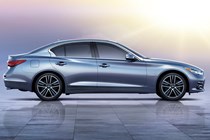
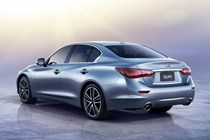
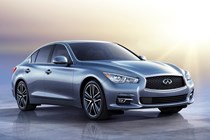
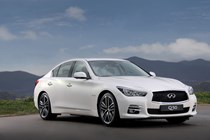


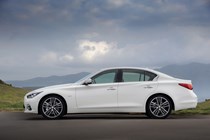
.jpg)
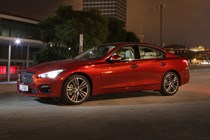
.jpg)
.jpg)
.jpg)
.jpg)
.jpg)
.jpg)
.jpg)
.jpg)
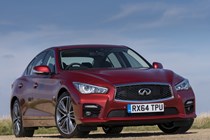
.jpg)
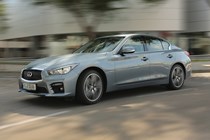
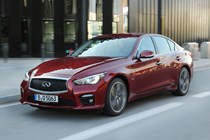
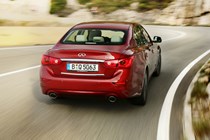
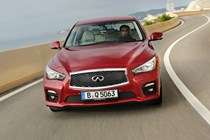
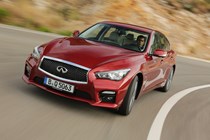
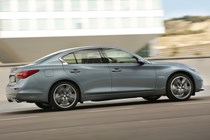
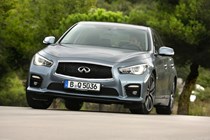
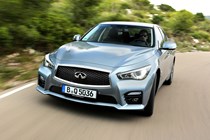
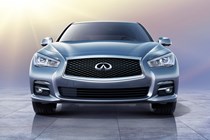
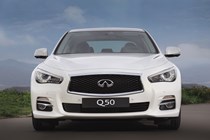
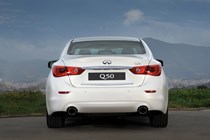
.jpg)
.jpg)
.jpg)
.jpg)
.jpg)
.jpg)
.jpg)
.jpg)
.jpg)
.jpg)
.jpg)
.jpg)
.jpg)
.jpg)
.jpg)
.jpg)
.jpg)
.jpg)
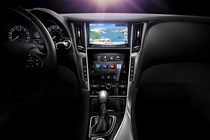
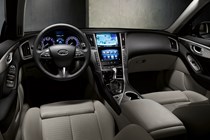
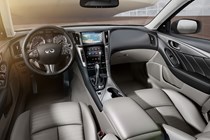
.jpg)
.jpg)
.jpg)
.jpg)
.jpg)
.jpg)
.jpg)
.jpg)
.jpg)
.jpg)
.jpg)
.jpg)
.jpg)
.jpg)
.jpg)
.jpg)
.jpg)
.jpg)
.jpg)
.jpg)
.jpg)
.jpg)
.jpg)
.jpg)
.jpg)
.jpg)
.jpg)
.jpg)
.jpg)
.jpg)
.jpg)
.jpg)


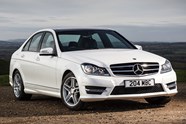









.jpg?quality=50)

.jpg?quality=50)
.jpg?quality=50)
.jpg?quality=50)
.jpg?quality=50)
.jpg?quality=50)
.jpg?quality=50)
.jpg?quality=50)
.jpg?quality=50)

.jpg?quality=50)











.jpg?quality=50)
.jpg?quality=50)
.jpg?quality=50)
.jpg?quality=50)
.jpg?quality=50)
.jpg?quality=50)
.jpg?quality=50)
.jpg?quality=50)
.jpg?quality=50)
.jpg?quality=50)
.jpg?quality=50)
.jpg?quality=50)
.jpg?quality=50)
.jpg?quality=50)
.jpg?quality=50)
.jpg?quality=50)
.jpg?quality=50)
.jpg?quality=50)



.jpg?quality=50)
.jpg?quality=50)
.jpg?quality=50)
.jpg?quality=50)
.jpg?quality=50)
.jpg?quality=50)
.jpg?quality=50)
.jpg?quality=50)
.jpg?quality=50)
.jpg?quality=50)
.jpg?quality=50)
.jpg?quality=50)
.jpg?quality=50)
.jpg?quality=50)
.jpg?quality=50)
.jpg?quality=50)
.jpg?quality=50)
.jpg?quality=50)
.jpg?quality=50)
.jpg?quality=50)
.jpg?quality=50)
.jpg?quality=50)
.jpg?quality=50)
.jpg?quality=50)
.jpg?quality=50)
.jpg?quality=50)
.jpg?quality=50)
.jpg?quality=50)
.jpg?quality=50)
.jpg?quality=50)
.jpg?quality=50)
.jpg?quality=50)